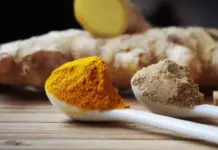Here’s why you get headache after drinking red wine
Ever wondered why some people, drinking red wine even in small amounts, get a headache. Flavanol may be the culprit, finds a study.
Typically, a “red wine headache” can occur within 30 minutes to three hours after consuming as little as a small glass of wine.
Researchers at the University of California, Davis, found that a flavanol found naturally in red wines can interfere with the proper metabolism of alcohol and can lead to a headache.
This flavanol is called quercetin and it is naturally present in all kinds of fruits and vegetables, including grapes. It’s considered a healthy antioxidant and is even available in supplement form. But when metabolised with alcohol, it can be problematic, revealed the study published in the journal Scientific Reports.
“When it gets in your bloodstream, your body converts it to a different form called quercetin glucuronide,” said wine chemist and corresponding author Andrew Waterhouse, professor with the UC Davis Department of Viticulture and Enology. “In that form, it blocks the metabolism of alcohol.”
As a result, people can end up accumulating the toxin acetaldehyde, explains lead author Apramita Devi, postdoctoral researcher with the UC Davis Department of Viticulture and Enology.
“Acetaldehyde is a well-known toxin, irritant and inflammatory substance,” said Devi. “Researchers know that high levels of acetaldehyde can cause facial flushing, headache and nausea.”
The medication disulfiram prescribed to alcoholics to prevent them from drinking causes these same symptoms. Waterhouse said that’s because the drug also causes the toxin to build up in the body when normally an enzyme in the body would break it down.
Waterhouse said levels of this flavanol can vary dramatically in red wine.
“Quercetin is produced by the grapes in response to sunlight,” Waterhouse said. “If you grow grapes with the clusters exposed, you get much higher levels of quercetin. In some cases, it can be four to five times higher.”
Here’s why you get headache after drinking red wine
Levels of quercetin can also differ depending on how the wine is made, including skin contact during fermentation, fining processes and ageing.
Scientists next aim to compare red wines that contain a lot of quercetin with those that have very little to test their theory about red wine headaches on people.

















